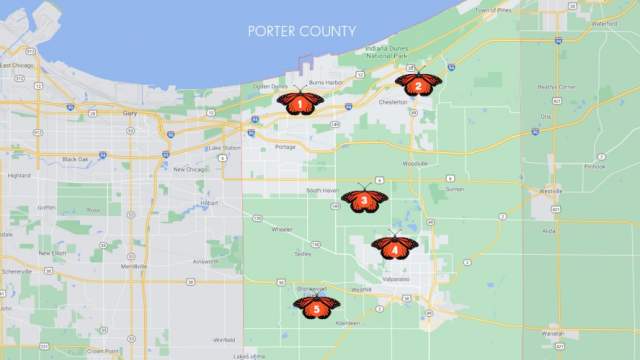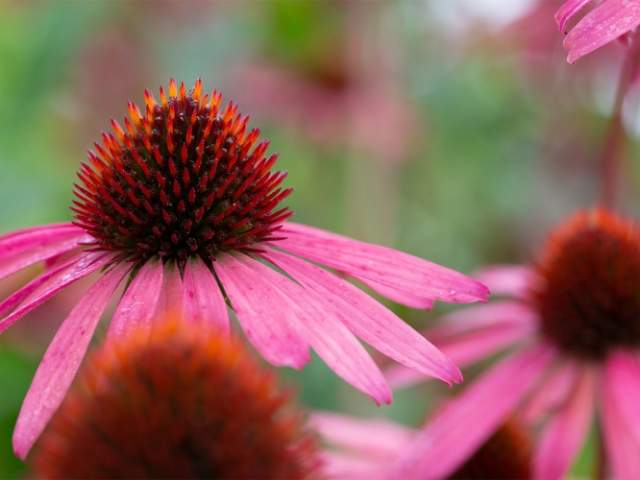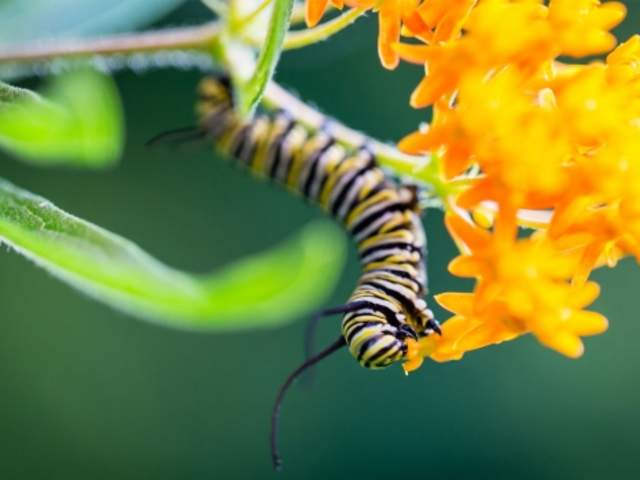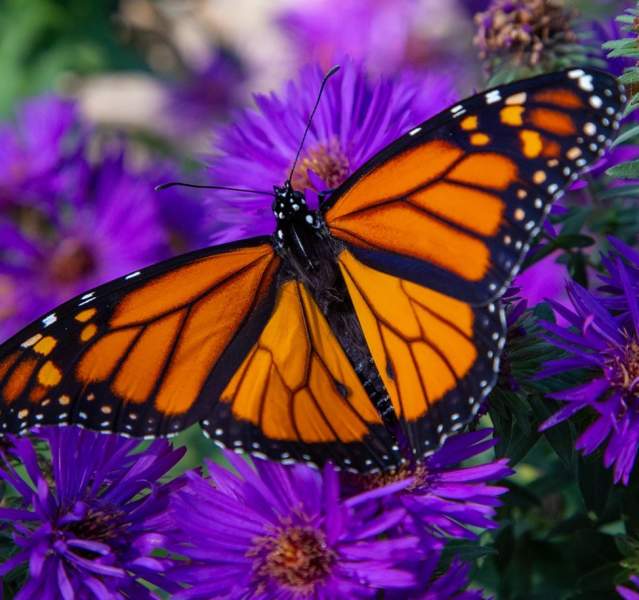Discover Monarch Butterflies
The story of the monarch butterfly is one of incredible transformation and epic travel. We are also part of this adventure, and each of us can play a key role in the survival of the monarch. Believe it or not, it can be as simple as planting a milkweed seed.
Create your own monarch-friendly garden using our coupons for local nurseries.
“We can each protect monarchs by helping to restore their habitat! Even a pot of native milkweed on your patio can make a difference.”
“Watch our three-part video series to learn about the monarch’s unique lifecycle and its dangerous journey south.”
To understand how important such a small step can be, we must begin where the monarch begins: with a tiny egg, no bigger than the head of a pin. The female monarch can carry up to 400 of these…
The monarch butterfly flies the farthest of any insect on Earth. Monarchs migrate between 2,000 and 3,000 miles on their trip from the United States and Canada to their winter homes in the…
Monarchs face many dangers on their trip south. And they still face obstacles even after reaching their destination. Overnight temperatures can drop below freezing and snow may even fall…
Inspired to Take Action?
Make a Butterfly Garden
Create a monarch habitat in your yard. Plant milkweed and native flowers for monarchs and other pollinators. Check…
Contribute to Science
The eastern monarch butterfly population has declined over 80%. Data collected by community scientists, like…
Protect the Forest in Mexico
Effective forest protection on the Monarch Butterfly Biosphere Reserve is more crucial than ever. Your donation to…
Register a Waystation
Your donation supports a butterfly sanctuary and helps nearby communities. With your donation, once a month, JM’s…
Adopt a Colony
Your donation supports a butterfly sanctuary and helps nearby communities. With your donation, once a month, JM’s…
Become a Citizen Scientist
In order to conserve the monarch migration, scientists need a thorough understanding of all aspects of this…
Forests for Monarchs
Forests for Monarchs has planted over 9 million trees through supporters like you. They plant two trees for every…
Don't Use Harmful Chemicals
Don’t use toxic chemicals: Limit your use of pesticides and herbicides in your garden. This site provides tips for…
Share Your Knowledge
Share what you know through educational programs, blogs, social media, and signage
Fundraise
Walk for monarchs to raise money through Miles for Monarchs. We will attempt, as a community throughout the United…
Be an Ioso-tourist
Support Ecotourism by visiting butterfly sanctuaries that support the local economies in Mexico and provide jobs and…
Learn More
Different people help in different ways. Find out how you can get involved in monarch conservation, no matter who or…
Support Job
Their mission is to preserve the butterfly sanctuary by creating jobs for local people in forest and monarch…
Monarch Waystations in the Indiana Dunes Area
- Ameriplex at the Port
- Indiana Dunes Tourism Visitor Center
- Meadowbrook
- Butterfly Meadows & Caterpillar Crossing
- Gabis Arboretum

Make Your Own Waystation
A simple way to help the monarchs on their journey is by planting native milkweed, nectar plants, and by avoiding the use of pesticides and herbicides in your own home garden.
Check out the sponsored links below for local resources.


15% Off
Applies to native plants and monarch butterfly plants. Valid on regularly priced plants, shrubs, and trees only. Show this coupon at the register.


15% Off
Applies to native plants and monarch butterfly plants. Valid on regularly priced plants, shrubs, and trees only. Show this coupon at the register.
Indiana Dunes and Monarchs
Indiana Dunes National Park is one of the most biodiverse national parks in the country. That’s more than Yellowstone, Grand Teton, and the Everglades. Read more about monarchs and other diverse flora and fauna.
Monarchs in the Indiana Dunes
- 9 minute read
Monarchs in the Indiana Dunes by Christine Livingston Male monarch in my garden (C. Livingston) I remember standing…
Monarchs: Crossing Those Lines
- 4 minute read
Monarchs: Crossing Those Lines by Alyssa Nyberg This past September upwards of 2,000 monarchs congregated on the oak…
Is That a Viceroy or a Monarch?
- 5 minute read
Is That a Viceroy or a Monarch? By Alyssa Nyberg In early September, our Kankakee Sand prairies are aflutter with…
Monarch Tracking
Scientists have been busy with this effort to learn more, and researchers are currently tracking monarchs to analyze their behavior. They do this by attaching small tags on their wings with a tag number that can be entered into a website. You, too can participate in a number of citizen scientist opportunities.
Watch a Monarch Eclose
(21 minutes)
e·close/iˈklōz/ verb
ENTOMOLOGY
-
(of an insect) emerge as an adult from the pupa or as a larva from the egg.
“some larvae pupated and eclosed substantially earlier than average”
Watch the Full Monarch Video
(13 minutes)
The story of the monarch butterfly is one of incredible transformation and epic travel. The monarch’s tale is complex and filled with trials and triumphs.
This video shows how each of us can play a key role in the survival of the incredible monarch. It can be as simple as planting a milkweed seed.
The Indiana Dunes is one of the most biodiverse national parks in the entire country. Over 1,100 flowering plant species and ferns make their homes here. How many flowers can YOU find?
Newsletter Signup
Thank you for your interest in visiting Indiana Dunes Country.
Visit with Care
The Indiana Dunes is 9,000 years of stunning scenery, indigenous culture, tight-knit communities…
Outdoor Adventures
Shaped by nature, made for adventure. In the Indiana Dunes, it’s all about fun times and tan…
Indiana Dunes State Park
Sand, shore, and the space to breathe—over 2,000 acres of it! This isn’t your run of the…
































